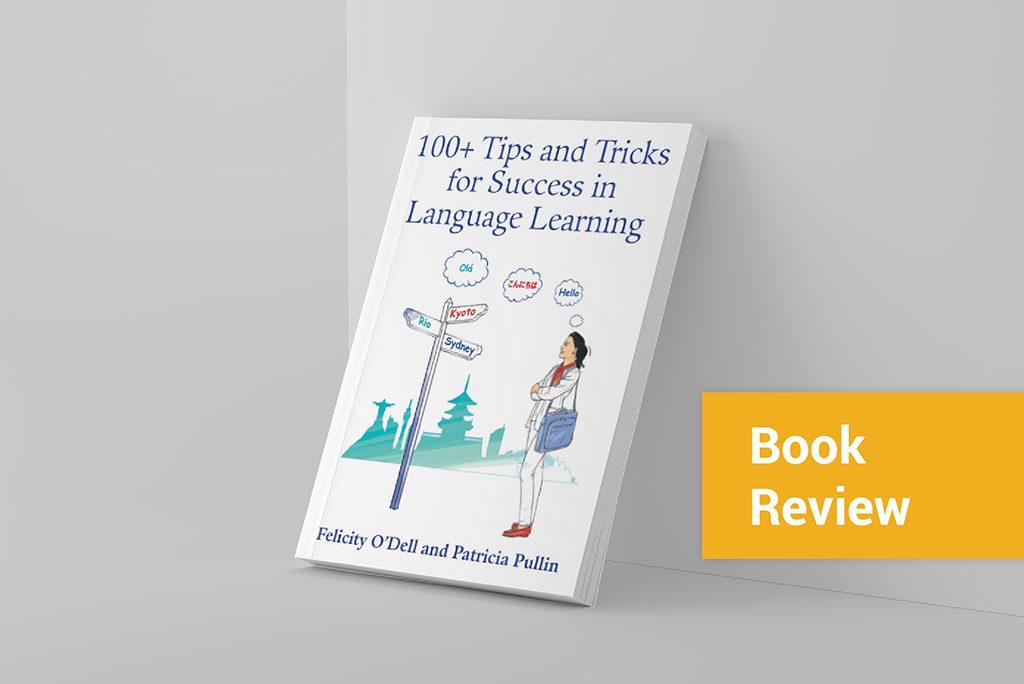English teachers are constantly stumbling across ingenious learning ideas that really work. ‘Jazz chants’, you may think to yourself. ‘Hmmm, they’re really good for sentence stress. But, hang on, what about using traditional poems not just for the rhythm, but for the rhymes at the end of the lines? Could be great for working on phonemes.’ You try it out — and it works! Then, all too often, you forget about it.
That’s why 100+ Tips and Tricks for Success in Language Learning by Felicity O’Dell and Patricia Pullen is so welcome. In its most basic form, it is a collection of all those ideas that you’ve had over the years conveniently filed into a single volume. But its structure makes it much more than the title (Tips and Tricks) suggests. The format is: needs analysis followed by practical ideas for effective learning with an ongoing theme of reflecting on progress, made explicit towards the end. Two final sections deal with approaching different cultures, and stories or case studies from language learners around the world.
The introduction tells us that ‘anyone anywhere can learn a foreign language’ — easy to say, but properly contextualised in the book’s first section, Making plans, which explores the concept of ‘proficiency’. Tip 3: How good is ‘good enough’?, for example, states that ‘If you’re planning a walking holiday in Italy, you may want to learn basic language that can help you to understand menus… or enquire about accommodation. So long as you can make yourself understood, you will be happy.’ Quite. Setting intelligent and achievable goals is the first step to successful language learning, but this concept is often poorly understood. Here it is clearly explained.
Then we move on to practical ideas, among the first of which, reassuringly, is Tip 12: Sign up for a course locally. What follows can be seen as demystifying a lot of what goes on in the language learning process within the context of a taught course: it’s easy to forget that most of the students in front of us are not sophisticated language learners. And it’s here also that we get the ideas (‘tips’ seems too meagre a word) for independent learning. We have Tip 39: Connecting words with concepts, which deals with picture prompts, sticky notes, mindmaps and other vocab strategies beloved of the EAL teacher. And, sure enough, here is Tip 68: Using poetry, which focuses on rhyme and rhythm.
I like the attention to reflective learning, and the realistic approach to measuring progress. So much of successful language learning (or any learning, come to that) is about motivation. The following quote summarises it well: ‘Language learning isn’t linear… we seem to learn in fits and starts. The brain needs time to assimilate new knowledge and takes this in when it appears “ready”, so long as we continue to provide regular input.’
If you understand this, then perhaps cognitively, at least, the frustrated learner can come to terms with how slow and unpredictable progress can appear to be.
The language in the quotation above will tell you that this book is aimed at an educated audience: it’s not in the ‘Learn French in three months’ sector. As a language learner, I’m not sure how I would approach it. It’s not the kind of book you read through; yet the structure of it means that by simply dipping in and out, you risk losing track of the learning path the authors have so carefully laid out. This is the one query that I can’t quite get my head around.
For teachers, however, that objection disappears because we are familiar with the pedagogy underlying the book. It then becomes something of an Aladdin’s cave – full of treasures to pull out and polish up in class. All those ideas, in fact, which you never got around to noting down but which Felicity O’Dell and Patricia Pullen have so kindly and painstakingly curated for you.

